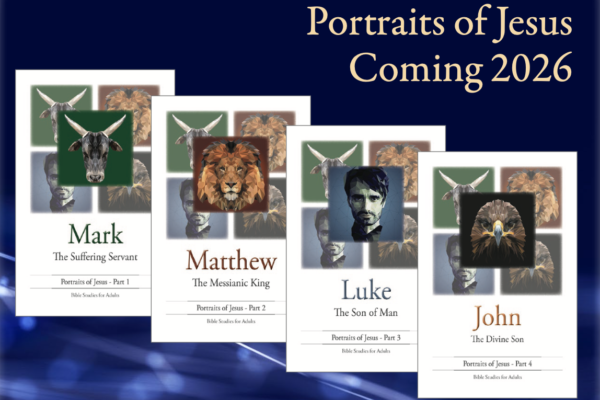Statement 1: The Bible
The Church of God (Seventh Day) has always taught, in various forms, “The Bible containing the Old and New Testaments, is God’s inspired Word. Inerrant in its original writing, the Bible is the only authoritative and infallible rule of faith and conduct for humanity.” But this commitment was tested in our earliest days.
Gilbert Cranmer, founder of the Church, joined the Christian Church (Christian Connexion) in his youth. Its slogan “The Bible and the Bible alone” guided his lifelong belief and ministry.
Upon becoming a William Miller Adventist and Sabbathkeeper, Cranmer associated with James and Ellen Whites’ Advent and Sabbath movement, but never received ministerial recognition. However, he kept Sabbath speaking appointments at some of Whites’ congregations around Kalamazoo, Michigan. As Ellen White’s visions and writings became popular and were considered divinely inspired, Cranmer disavowed the claim. James White retaliated by forbidding his congregations to let him enter their pulpits. This forced Cranmer to evangelize on his own initiative in southwestern Michigan, resulting in the establishment of several Sabbath, Advent, and Bible-believing congregations known as the Church of Christ.
The Church of Christ’s premier issue of The Hope of Israel magazine of August 10, 1863, stated, “‘The Bible and the Bible alone’ contains the whole moral law; and its precepts are sufficient to govern God’s people in every age of the world, without the addition of human creed or articles of faith.”
Merritt E. Cornell organized a Sabbathkeeping Adventist church in Marion, Iowa, in June 1860, with fifty members. They signed a covenant:
We the undersigned, do hereby express our wish to be associated together in Christian fellowship, as a Church of Jesus Christ, at Marion, whose covenant obligation is briefly expressed in keeping the commandments of God and faith of Jesus, taking the Bible and the Bible alone, as the rule of our faith and discipline.
When Cornell returned to Marion from attending James White’s conference at Battle Creek, Michigan, in October 1861, he proposed that Ellen White’s writings be added to the church’s covenant. He argued, “. . . these recent publications were equal authority, and binding forever with the Bible, and urged [the church] to adopt their teachings also, as a rule of faith and discipline.” Half of the congregation accepted his proposal and affiliated with the Seventh-day Adventist Church. The other half refused Cornell’s proposal, retaining their covenant and name.
On October 3, 1884, the Marion church assisted in organizing the General Conference of the Church of God with the churches in Michigan, Kansas, Missouri, and Nebraska without preconditions or negotiation.
Statement 2: Jesus
The founders of the Church of God (Seventh Day) believed the Father alone is God. Jesus did not preexist His birth to Mary, and Joseph was His father.
A Churchwide discussion of the subject began with the October 10, 1871 issue of The Hope of Israel. Erastus Branch challenged its readers to prove Jesus’ preexistence. Henry E. Carver responded by defending Jesus’ preexistence, deity, and virgin birth. Jesus’ preexistence was discussed in the Church’s magazines on occasion, resulting in a progression of thought that ultimately led the Church to its current Christology.
Andrew N. Dugger, editor of the Bible Advocate magazine, unilaterally revised the Church’s doctrines in 1917, and wrote, “We believe that Christ is the Son of God . . . and is now at the right hand of the throne of God.” His editorial of October 28, 1924, entitled “Anti-Arianism Denounced,” presented Arianism as the Church’s Christology. (Arianism teaches that Jesus was created in eternity before all creation in a life-form between God and mankind, participated in creation, and was born of the virgin Mary.) In 1936, Dugger wrote Arianism as a distinguishing doctrine of the Church in his and C. O. Dodd’s spurious book A History of the True Religion.
Christology went unaddressed further by the Church until 1949. In that year it adopted two doctrinal statements: “Jesus the Son of God” (“Jesus of Nazareth is the only begotten Son of God, conceived of the Holy Spirit and born of the Virgin Mary. He is the Christ, or Messiah, sent from God to be our Savior and Redeemer”) and “Pre-existence of Christ” (“. . . Jesus Christ, the Son of God, was in the plan of salvation before the foundation of the world. He was the Word spoken of in John 1:1, 2 . . .”).
A revision of the preexistence statement in 1986 could be taken as a reference to His Deity: “Jesus was present with God and was preeminent in the Creation. He shared His Father’s glory before taking on the form of a man. . . .” But a further revision of the doctrinal beliefs was made in 1994, and amended in 1996, intending to affirm Jesus’ deity: “Jesus Christ is the only begotten Son of God. He is of the same substance as the Father. Before time began, He existed with the Father, shared the Father’s glory, and participated in creation. . . .”
That statement was revised in 2006 and represents the Church’s current Christology (see page 7).








